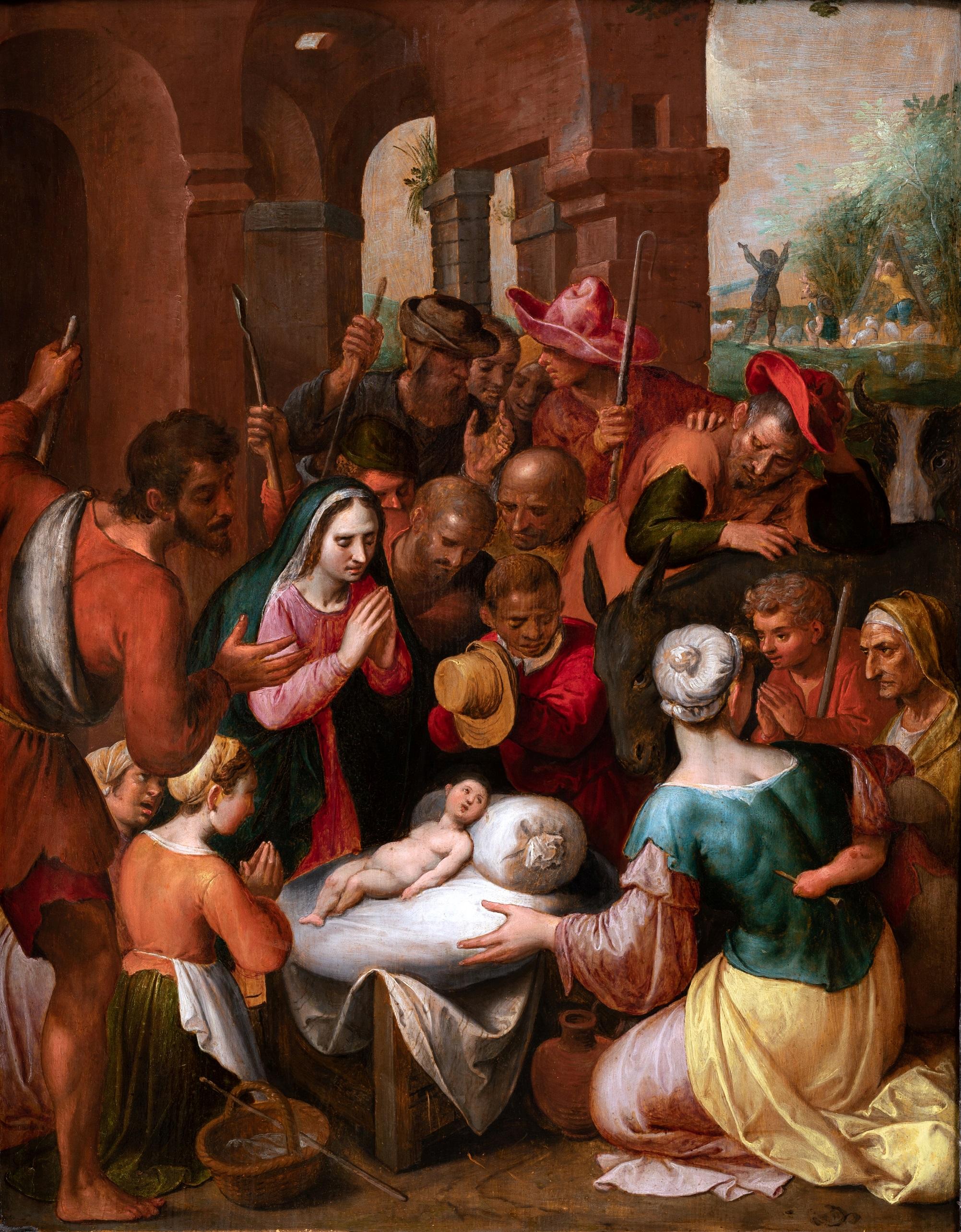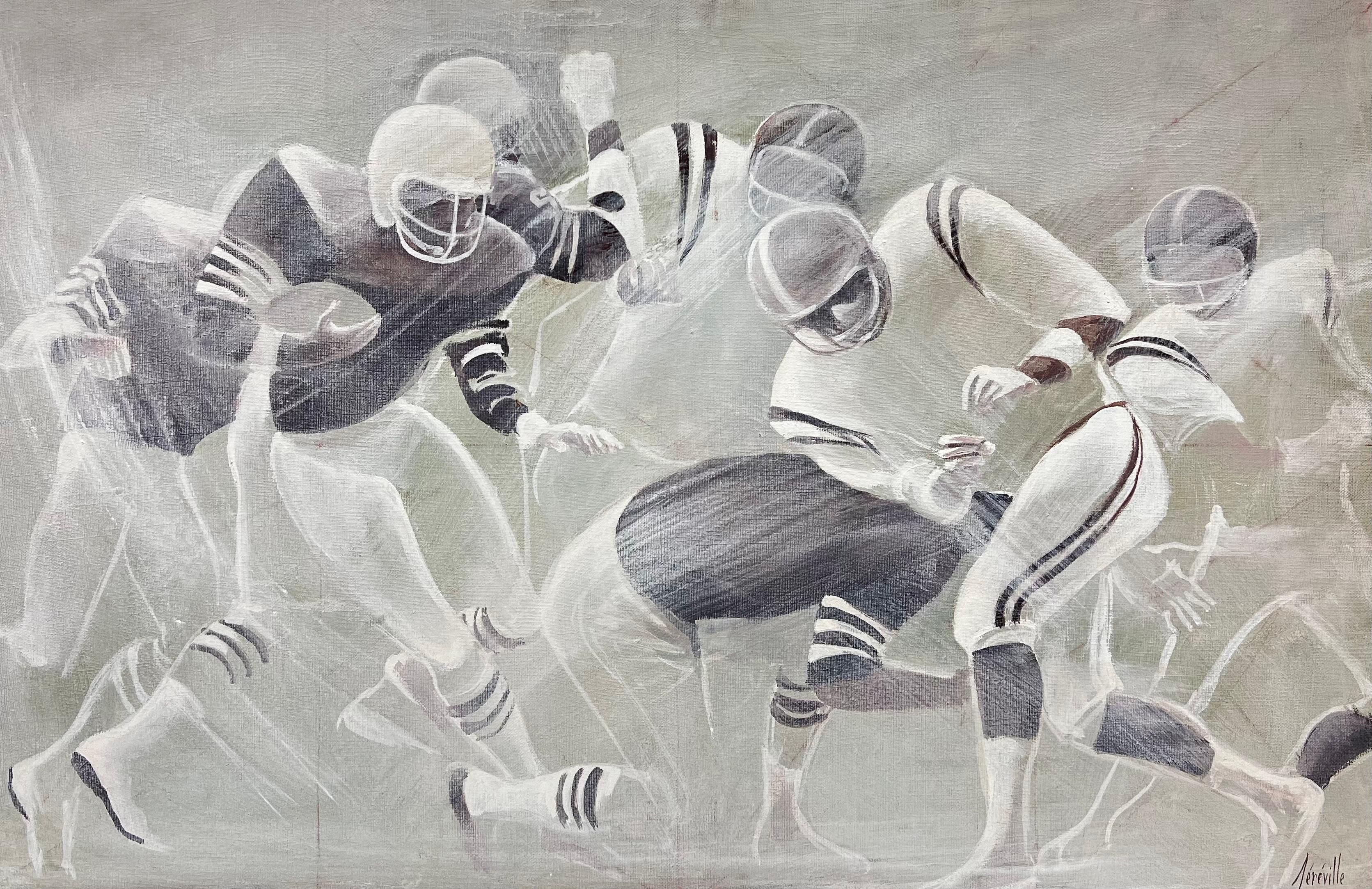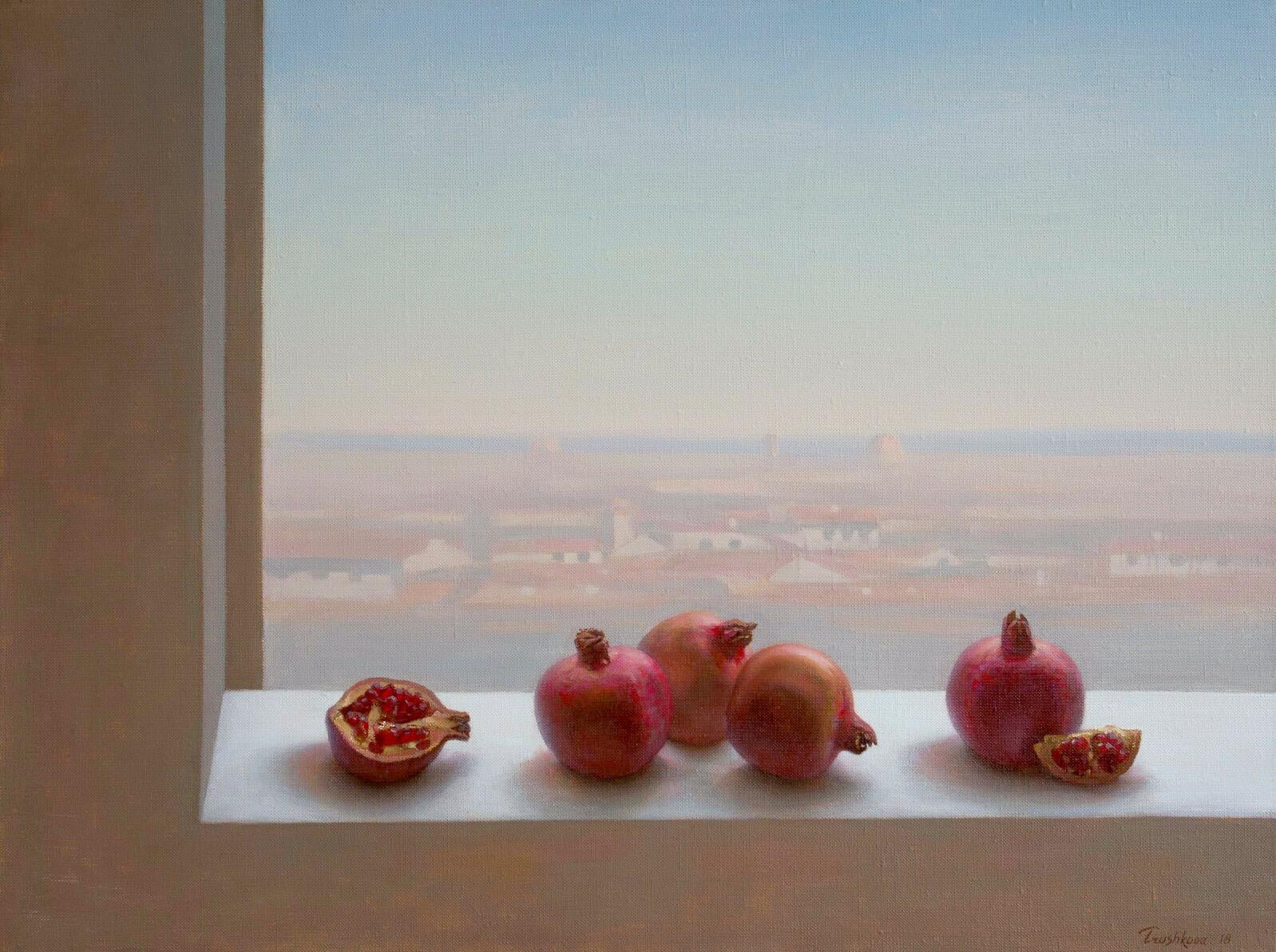Items Similar to 'Clelia crosses the Tiber' Domenico Lupini attributed to, XVth century
Want more images or videos?
Request additional images or videos from the seller
1 of 19
Unknown'Clelia crosses the Tiber' Domenico Lupini attributed to, XVth century1500s-1600s
1500s-1600s
About the Item
The painting represents Clelia crossing the Tiber. Clelia was a Roman heroine, who was given as a hostage, together with other girls, to the Etruscan king Porsenna during the peace negotiations with the city; he managed to escape, however, by swimming across the Tiber. Porsenna asked the Romans to return it, who agreed, but admired by her heroism, he decided to free her by allowing her to take other prisoners with her, whom Clelia chose from among the youngest. The moment of the representation is precisely that of the crossing of the river, of which there is the personification in the foreground on the right, with an elderly gray-haired man, accompanied by a young woman with a cornucopia. The scene is very dynamic, with Clelia and the other girls who create a large and lively group, together with the horse ridden by the protagonist, as some versions of the story recall; behind them the tents of the Etruscan king's camp with some soldiers. On the other side of the river there is another group of women, the crossing already completed, while in the background you can see the expanse with the Capitoline city with a classic face. The work, as evidenced by a small scroll, is attributed to Domenico Lupini, an artist about whom not much is known but whose scope of activity between Bergamo and Venice can be hypothesized. The only two signed works are a "converted Magdalene" and an "Annunciation", but other works have been attributed to him by the scholar Federica Nurchis and placed in the monastery of Santa Chiara in Bergamo. These paintings present a warm and refined chromatism which, together with the elegance of the characters and the compositional modality, suggest a Venetian stay by Lucini, which seems to recall the atmospheres of Tintoretto, Veronese and Palma il Giovane.
- Creation Year:1500s-1600s
- Dimensions:Height: 53.94 in (137 cm)Width: 78.35 in (199 cm)Depth: 1.19 in (3 cm)
- Medium:
- Period:
- Condition:
- Gallery Location:Milan, IT
- Reference Number:1stDibs: LU680313750472
About the Seller
4.8
Gold Seller
These expertly vetted sellers are highly rated and consistently exceed customer expectations.
Established in 2017
1stDibs seller since 2017
102 sales on 1stDibs
Typical response time: 1 hour
- ShippingRetrieving quote...Ships From: Milan, Italy
- Return PolicyA return for this item may be initiated within 14 days of delivery.
More From This SellerView All
- David and Abigail, fourth decade of the 17th centuryLocated in Milan, ITThe painting, done in oil on canvas, depicts the meeting between King David and Abigail, as narrated in the biblical text from the First Book of Samuel (I Samuel 25:1-34). David, left without food in the wilderness with his army, seeks relief from the wealthy Nabal, who contemptuously denies him any help, ungrateful of the benevolence he previously received from the king. Upon hearing the rejection, the ruler intends to take revenge by killing his entire lineage. Abigail, Nabal's beautiful and wise wife, decides to right the wrong and bring David plenty of food and gifts. In the king's presence the woman humbles herself, winning his forgiveness and benevolence. Soon afterwards widowed, she will in fact become his bride. The broad scene depicts the climax of the Old Testament episode, the moment when the woman prostrates herself before David and his servants prepare to deliver the gifts. The biblical event is here a pretext, as is customary in modern-age painting, for staging the colorful description of a sumptuous procession, which can be divided into two parts, almost two wings of a crowd divided specularly: on the left David with his dignitaries and the army; on the other, Abigail's retinue, handmaids, servants leading dromedaries and donkeys laden with food. The crowded group of figures is set in a natural proscenium: above a low horizon, barely hinted at by distant blue mountains, rises on the left side a craggy rocky cliff, the shelter of the army led by the ruler. The 'somatic intonation of the characters, as well as the choice of metallic chromatics and the play of light on the shiny fabrics refer to a clear Flemish matrix, particularly the influence of the frothy and sumptuous painting of Rubens and Van Dyck. As well set forth in the expert report prepared by Professor Giuseppe Sava, the work is to be attributed to Vincent Malò...Category
17th Century Other Art Style Figurative Paintings
MaterialsOil
- Madonna and Child with St. John, c. 1540-1560. Attributed to Carlo PortelliLocated in Milan, ITThe painting features Our Lady holding the Child, who extends his hand toward the wooden cross, the symbol of the future Passion, and St. John. Behind the three figures a rocky mount...Category
18th Century and Earlier Other Art Style Figurative Paintings
MaterialsOil
- The Preaching of St. John the Baptist, Workshop of Fans Francken II, 1600sLocated in Milan, ITThe sermon of the Baptist is set in a large open space, with rich vegetation and wooded glimpses, and on the back, in the distance, you can see the buildings of a city. The scene see...Category
17th Century Other Art Style Figurative Paintings
MaterialsOil
- Madonna Enthroned with Child between angels and saints Nicholas of TolentinoLocated in Milan, ITThe painting features the enthroned Madonna and Child, two praying angels, and Saints Nicholas of Tolentino, Augustine, Luke the Evangelist, and Monica, below an elegant canopy. The ...Category
16th Century Other Art Style Figurative Paintings
MaterialsOil
- Mythological Subject, Italy XVII Century, The Tale of Apollo and MarsyasLocated in Milan, ITOil painting on canvas. Northern Italian school of the seventeenth century. The large canvas derives from an engraving of 1562 by the Venetian Giulio Sanuto, who faithfully reproduce...Category
17th Century Other Art Style Figurative Paintings
MaterialsOil
- Penitent Magdalene and St. John the Baptist, oil on slate, early 17th centuryLocated in Milan, ITThe figure of the Magdalene emerges from the darkness, leaning to follow the curve of the stone support; it is depicted vaulted with an interrogative air towards the dark, as if in an attitude of listening, the left hand raised and the other leaning on the "memento mori" very shortened. In front of her a scourge and the jar of ointment. Painted en pendant, Saint John the Baptist is depicted as a young man, with a lamb at his feet, in his hand the processional cross with the banner "exception agnus dei", while with his right hand he draws from the source of water, recalling the episode that will see Jesus Christ baptized. In both paintings the figures stand out in a strong and incisive way thanks to the black that characterizes the slate plate on which they are depicted. Historical-critical analysis: We are faced with two examples of oil painting on stone. The beginnings of this particular technique are to be placed in the first half of the sixteenth century: after some fifteenth-century experiments it is with Sebastiano del Piombo that the genre takes hold in the sixteenth century. There were different types of support used, also linked to their availability: amethyst, marble in various colors, alabaster and blackboard. The reasons underlying this technical choice refer to Renaissance artistic theories: it is no coincidence that the painter who most often experimented with oil painting on marble...Category
Early 17th Century Other Art Style Figurative Paintings
MaterialsOil
You May Also Like
- French Surrealist Oil Painting Cubist Figurative Scene 20th centuryLocated in Cirencester, GloucestershireFigurative Abstract French School, signed oil painting on board framed: 21.25 x 30.75 inches canvas: 20.5 x 30 inches The painting is in overall good condition, bar an age related pa...Category
20th Century Surrealist Figurative Paintings
MaterialsOil
- Cercle of Ambrosius Francken, Adoration of the shepherds, 17th century AntwerpLocated in PARIS, FRAdoration of the shepherds, Cercle of Ambrosius Francken, Early 17th century Antwerp school Oil on oak panel: h. 55 cm, w. 43 cm (21.65 in x 16.93 in) 17th c. ebonized and moulded f...Category
Early 17th Century Old Masters Figurative Paintings
MaterialsOil, Wood Panel
- Fate Challenge I (lady climber wildcat brown earth tones yellow ochre mauveBy Rudolf KosowLocated in Quebec, QuebecIn "Fate challenge II“ a mountaineer is eagerly climbing a steep rock ledge because she has seen something from a distance that she could not explain and is planning to find out. Alt...Category
2010s Surrealist Figurative Paintings
MaterialsCanvas, Oil
- 17th century Italian figure painting - Fall of Fetonte - Oil on copper LandscapeLocated in Varmo, ITRoman master (c. 1650) - The Fall of Phaeton. 40.5 x 52.5 cm without frame, 56.5 x 59.5 cm with frame. Oil on copper, in carved and gilded wooden fra...Category
Mid-17th Century Baroque Figurative Paintings
MaterialsCopper
- American Soccer Game, Dramatic 20th century Oil Painting, signed 1980's periodLocated in Cirencester, GloucestershireArtist/ School: French School, circa 1988, signed and inscribed verso Title: American Soccer players Medium: oil on canvas, framed Framed: 24 x 37 inches Canvas : 23.75 x 36.5 i...Category
Late 20th Century Modern Figurative Paintings
MaterialsOil
- Florence -original still life painting-original realism still life oil paintingLocated in London, Chelsea"Florence," a captivating Impressionistic masterpiece by the talented artist Irina Trushkova, beautifully captures the essence of one of the world's most enchanting cities. Rendered ...Category
21st Century and Contemporary Photorealist Still-life Paintings
MaterialsCanvas, Oil




